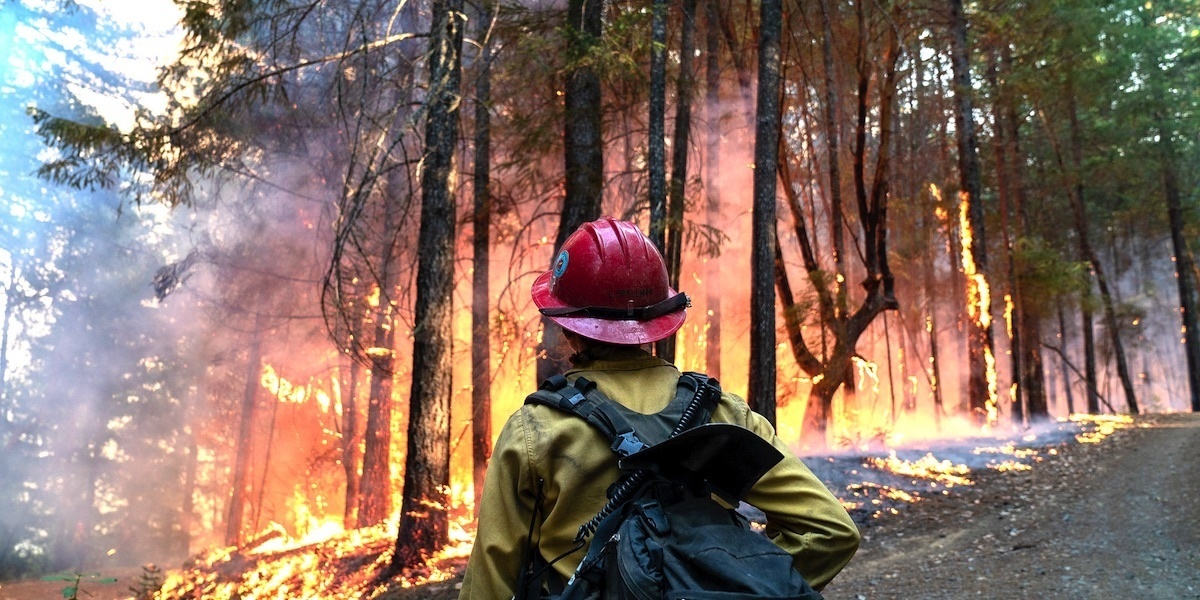
Fire Chief: Verizon Throttled Data Speed, Endangering Firefighting Efforts

A Northern California fire chief said in a
court filing (pdf) Monday that during its efforts in battling the Mendocino Complex Fire—the largest in state history—that one of the department’s trucks, equipped with Verizon wireless service, had its connection speeds significantly slowed and made communication effectively impossible.
“This throttling has had a significant impact on our ability to provide emergency services. Verizon imposed these limitations despite being informed that throttling was actively impeding County Fire’s ability to provide crisis-response and essential emergency services,” Santa Clara County Fire Chief Anthony Bowden wrote in a declaration, first reported by Ars Technica on Tuesday.
The fire department paid Verizon for an “unlimited” data plan but suffered heavy throttling after it surpassed its monthly data allowance of 25GB.
“Data rates had been reduced to 1/200, or less, than the previous speeds,” Bowden wrote, noting that without full-speed service on the communications rig, “resources could be deployed to the wrong fire, the wrong part of a fire, or fail to be deployed at all. Even small delays in response translate into devastating effect, including loss of property, and, in some cases, loss of life.”
The fire chief’s claims were added to a lawsuit filed this week by attorneys general from 22 states and the District of Columbia seeking to reverse the Federal Communication Commission’s repeal of net neutrality.
“The Internet has become an essential tool in providing fire and emergency response, particularly for events like large fires which require the rapid deployment and organization of thousands of personnel and hundreds of fire engines, aircraft, and bulldozers,” he noted.
In a series of email exchanges between Verizon and County Fire that were included in the filing, the company confirmed the throttling but told the department they would have to switch to a $99.99 a month data plan, more than twice the cost the department had been paying. County Fire eventually upgraded to the more expensive plan.
Bowden claimed Verizon throttled data during previous fires. “It is likely that Verizon will continue to use the exigent nature of public safety emergencies and catastrophic events to coerce public agencies into higher-cost plans, ultimately paying significantly more for mission-critical service—even if that means risking harm to public safety during negotiations,” he wrote.
More than 3,500 firefighters are still battling the Mendocino Complex Fire, which is made of the River and Ranch blazes. The fires have burned 406,532 acres as of Tuesday.
After the Ars Technica article was posted, Verizon admitted to the error but said in a statement, “This situation has nothing to do with net neutrality or the current proceeding in court.”
The statement continued:
“We made a mistake in how we communicated with our customer about the terms of its plan. Like all customers, fire departments choose service plans that are best for them. This customer purchased a government contract plan for a high-speed wireless data allotment at a set monthly cost. Under this plan, users get an unlimited amount of data but speeds are reduced when they exceed their allotment until the next billing cycle. Regardless of the plan emergency responders choose, we have a practice to remove data speed restrictions when contacted in emergency situations. We have done that many times, including for emergency personnel responding to these tragic fires. In this situation, we should have lifted the speed restriction when our customer reached out to us. This was a customer support mistake. We are reviewing the situation and will fix any issues going forward.”

 233k
233k  41k
41k  Subscribe
Subscribe 